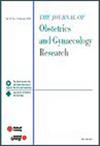Associations between serum and seminal vitamin D levels and sperm parameters
Abstract
Aim
To examine the association between serum/seminal plasma vitamin D levels and sperm parameters, the possible effects of serum/seminal vitamin D on sperm motility via seminal intracellular calcium measurement, and the antioxidant effect via malondialdehyde (MDA) measurement.
Methods
This prospective study was conducted on 87 male patients. Serum vitamin D levels of patients were evaluated and grouped based on their serum vitamin D levels: low (<50 nmol/L), normal (50–75 nmol/L), and high (>75 nmol/L). Sperm characteristics were evaluated. Seminal plasma vitamin D, intracellular calcium, and MDA concentrations were measured using Liquid Chromatography Mass Spectrometry (LC–MS/MS), High-performance liquid chromatography (HPLC), and fluorescence plate reader methods, respectively.
Results
Patients with normal serum vitamin D levels had higher total progressive motile sperm concentrations (14.0 vs. 8.5 vs. 4 million/mL, p = 0.037) and higher normal sperm morphology (6% vs. 4% vs. 3%, p = 0.020) compared to those with low and high levels. No correlations were found between serum vitamin D levels and seminal vitamin D (r = 0.052, p = 0.468), MDA (r = −0.048, p = 0.791), and intracellular calcium levels (r = 0.064, p = 0.929). Seminal intracellular calcium levels were significantly correlated with total (r = 0.241, p = 0.024) and progressive (r = 0.217, p = 0.043) sperm motility.
Conclusions
There were positive correlations between serum vitamin D levels, total progressive motile sperm concentration, and normal sperm morphology. However, serum vitamin D levels were not correlated with seminal vitamin D levels and showed no correlations with potential mechanisms of action, reflected by intracellular calcium and MDA concentrations. Conversely, intracellular calcium levels were positively correlated with both total and progressive sperm motility, suggesting that intracellular calcium plays an essential role in sperm motility.

 求助内容:
求助内容: 应助结果提醒方式:
应助结果提醒方式:


